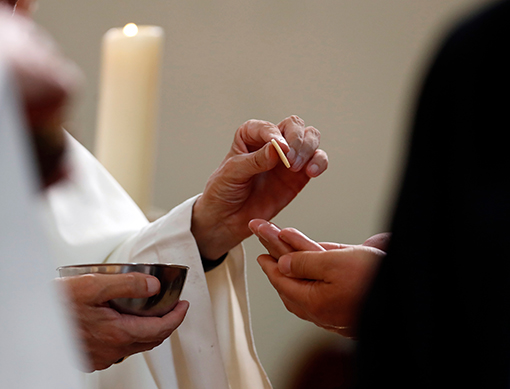With every new year, Pope Francis, like many popes before him, asks that the faithful pray for a different intention each month.
 The year, for the month of February, the Pope’s intention says, “We pray that parishes, placing communion at the center, may increasingly become communities of faith, fraternity and welcome towards those most in need.”
The year, for the month of February, the Pope’s intention says, “We pray that parishes, placing communion at the center, may increasingly become communities of faith, fraternity and welcome towards those most in need.”
Certainly, that’s an important prayer for us adults. But what about our children, whether they are students in grammar school or high school?
What does the parish mean to them?
For some, it is the place where the go to Mass, for others, where they do youth ministry or religious education. For others, it doesn’t mean much.
How might we help students understand what Pope Francis is saying when he refers to parishes as communities of faith, fraternity and welcome towards those most in need?
Give them the parish bulletin.
A quick review of the latest bulletin from our Co-Cathedral included the following opportunities for lessons and conversations:
• The artwork on the front page – Does anyone know what story in the Bible is illustrated? The Scripture verse in the corner was a clue: “Your reward will be great in Heaven.” It’s from Matthew 5, where we find the Beatitudes. A great Scripture opportunity for kids and teens.
• A list of pastoral staff – Who is actually responsible for the parish? Who are the priests, the deacons, the office staff, maintenance staff, religious educators? What do they do? Just like a family, they all have different roles.
• A reflection about the Gospel, and its place in the liturgical year – Fourth Sunday of Ordinary Time. How many lessons could you get out of this? • An entire page dedicated to remembrances, weekly intentions, a prayer for those mourning – Elements of compassion, the need and fruit of prayer, being part of the Communion of Saints.
• A section welcoming new members of the parish family through the Sacrament of Baptism – An opportunity to discuss what it means to be part of the family, the importance of being known by your name, or feeling welcomed at home.
• A list and messages about a variety of ministries, many which reach out and serve those in need – What do each of these ministries say about what it means to be Catholic?
Examine your own parish bulletin and see what small treasures you can find to help your students learn that the parish is another family. Ask in your parish office if something might be added to the bulletin especially for youth – a student’s prayer, a classroom’s special intention, or a congratulations for student participation in a ministry of service. Let students discover what happens in their parish that makes the parish a community, sharing faith, sharing purpose, sharing concern and offering welcome for those in need.
For teacher reflection. The Catechism of the Catholic Church teaches that a parish “is the place where all the faithful can be gathered together for the Sunday celebration of the Eucharist. The parish initiates the Christian people into the ordinary expression of the liturgical life: it gathers them together in this celebration; it teaches Christ's saving doctrine; it practices the charity of the Lord in good works and brotherly love:
‘You cannot pray at home as at church, where there is a great multitude, where exclamations are cried out to God as from one great heart, and where there is something more: the union of minds, the accord of souls, the bond of charity, the prayers of the priests’” (St. John Chrysostom, CCC 2179).
 About the Author
About the AuthorMary Clifford Morrell, mother of six and grandmother to ten, is a Catholic journalist, editor, and author who has served the Dioceses of Metuchen and Trenton, New Jersey; Burlington, Vermont, and RENEW International in the areas of religious education and communication.
